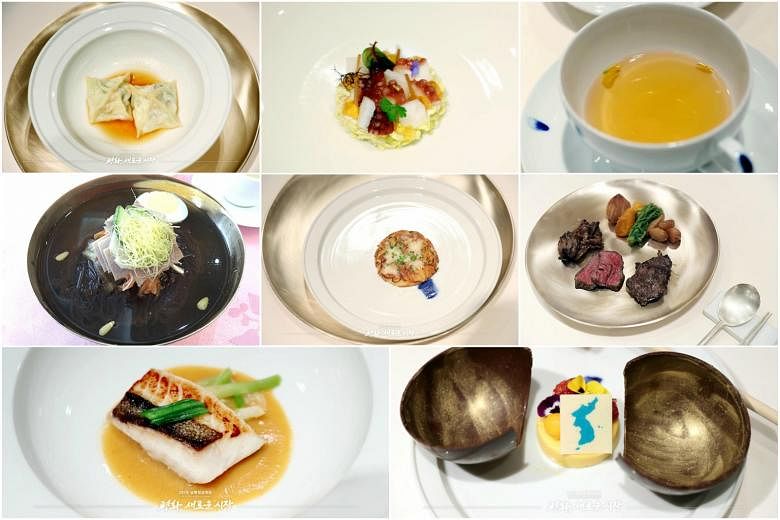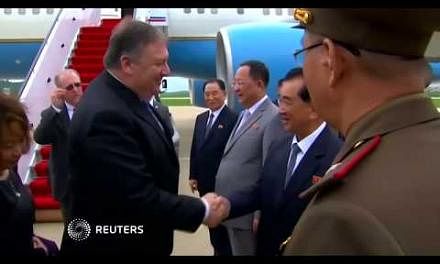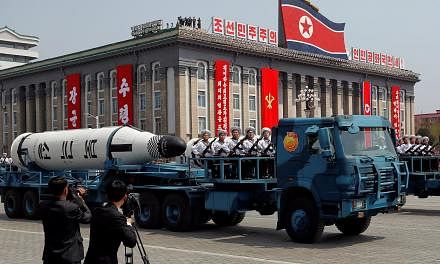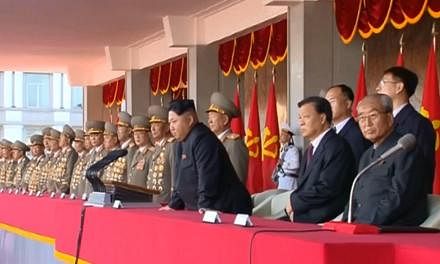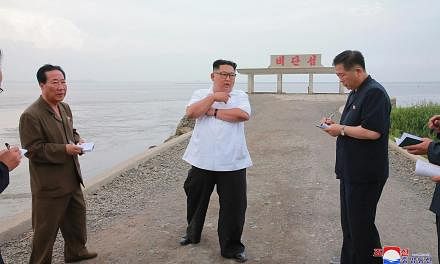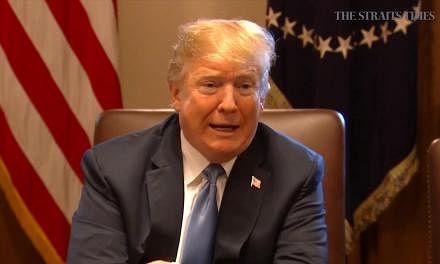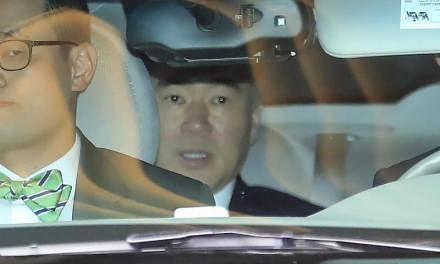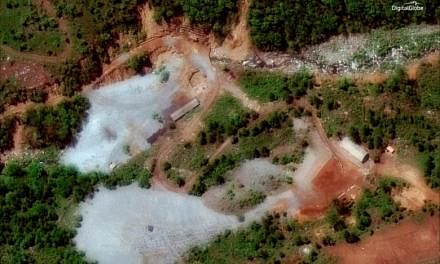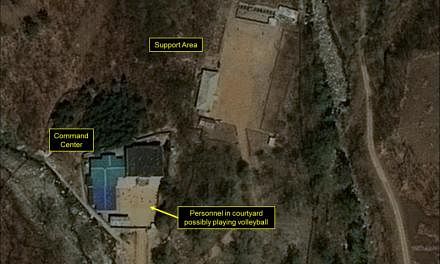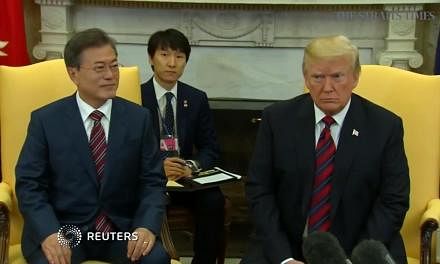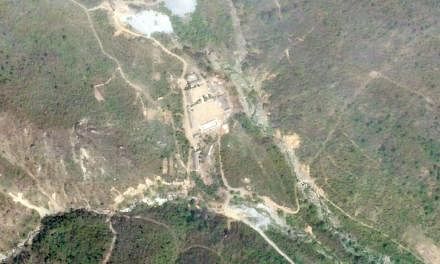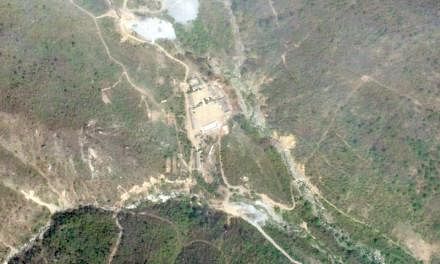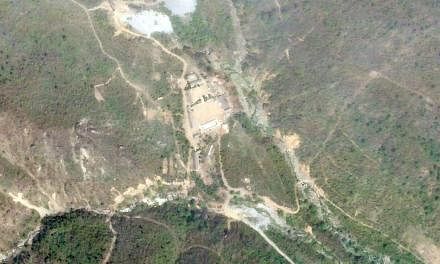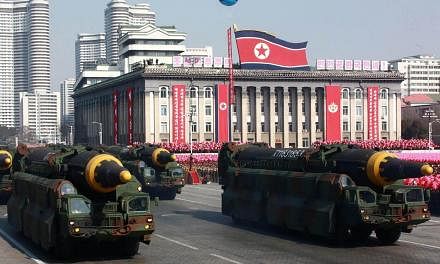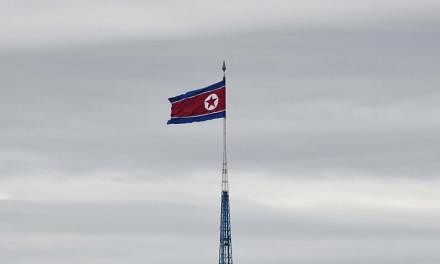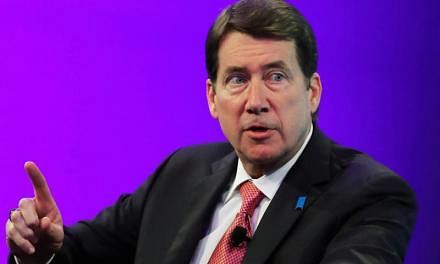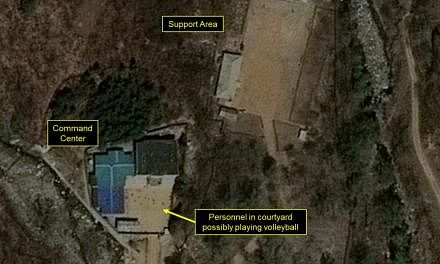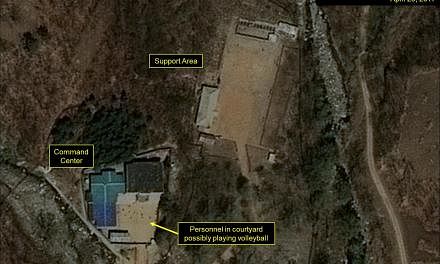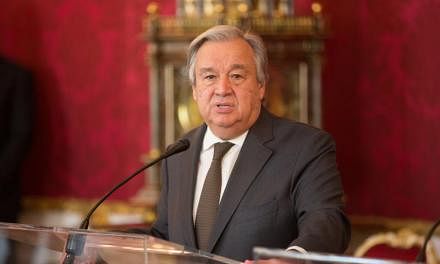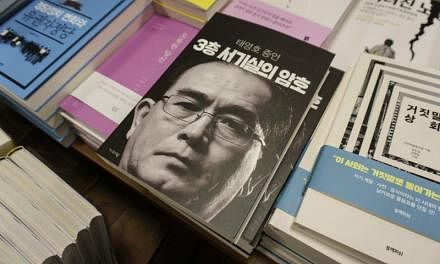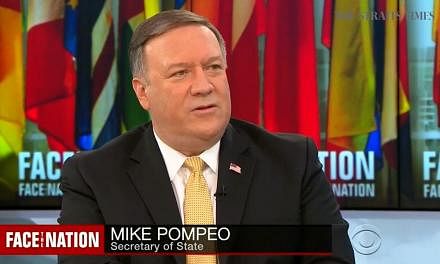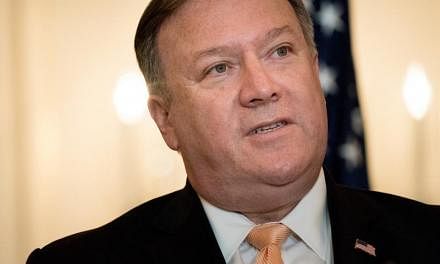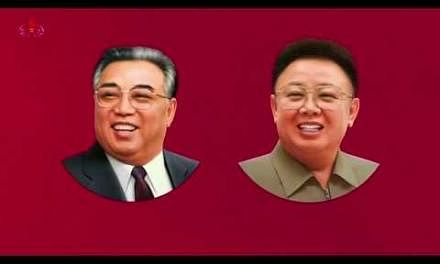The leaders of North and South Korea will be meeting at a historic summit on Friday (April 27).
North Korea's Kim Jong Un will meet South Korean President Moon Jae In at the border village of Panmunjom in the Demilitarised Zone.
The two previous inter-Korean summits in 2000 and 2007 both took place in North Korea's Pyongyang city.
Here are some sidelights of what to expect.
What time will they meet?
Official dialogue between Mr Kim and Mr Moon will begin at 10.30 am local time (9.30am Singapore time), an hour after Kim is scheduled the cross the border on foot at 9.30 am local time (8.30am Singapore time).
Where will they meet?
The two men will meet at the Peace House on the South Korean side of Panmunjom, a village at the Demilitarised Zone.
The setting means Mr Kim will be the first Democratic People's Republic of Korea leader to step onto South Korean soil after the Korean War, although the distance between the demarcation line and the Peace House is only several hundred metres.
In the afternoon, Mr Kim and Mr Moon will hold a tree-planting ceremony. They selected a 1953-born pine tree to symbolise the year that the armistice was signed to end the three-year conflict.
What's on the menu?
1. Steamed square dumplings, also known as pyeonsu, stuffed with croaker and sea cucumber from Gageodo Island in Sinan-gun, Jeollanam-do province, the home town of former South Korean President Kim Dae Jung.
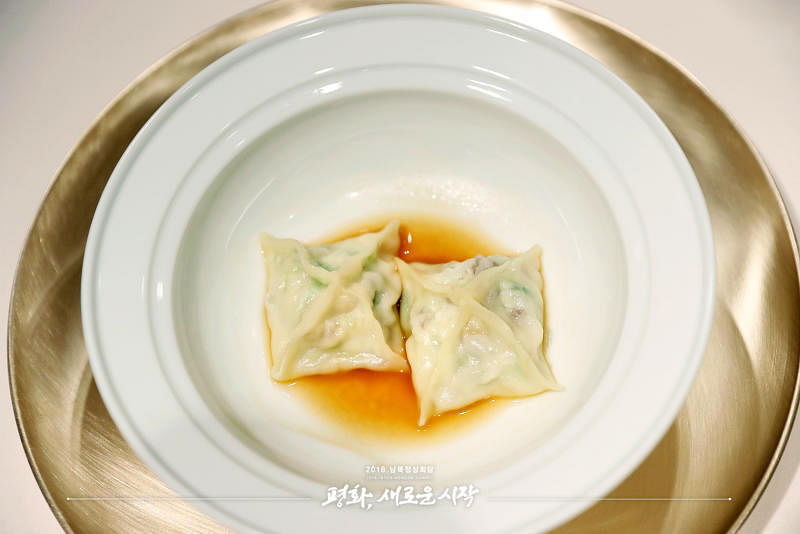
2. Cold naengchae salad made with octopus from Tongyeong-si, Gyeongsangnam-do province, the hometown of composer Yun Isang, who made it possible for a South Korean troupe to perform in Pyeongyang in 1990.
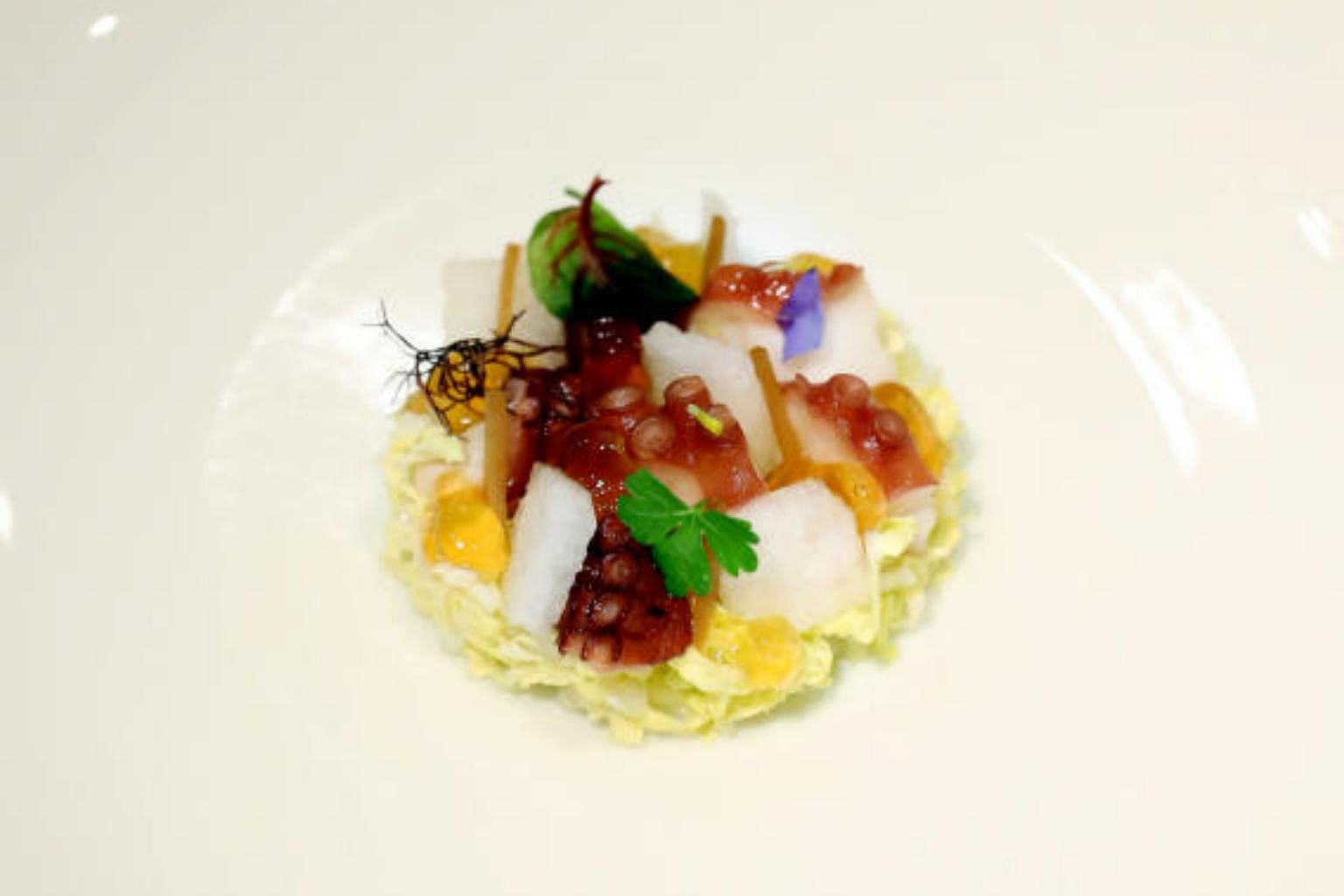
3. Tea and refreshments made from Hallabong oranges from Jeju Island in the South and from pine mushrooms from along the Baekdudaegan Mountain Range, symbolising the significance of unity between the two Koreas.

4. A bowl of Pyongyang-style cold noodles, also known as naengmyeon, served in a chilled meat broth from the Okryugwan restaurant in Pyeongyang. This dish was included on the menu at the request of President Moon. He specifically requested noodles from Okryugwan, North Korea's best-known restaurant that is famous for the dish. The cold noodles will be made by its head chef, who will go to the truce border village of Panmunjom to make it.
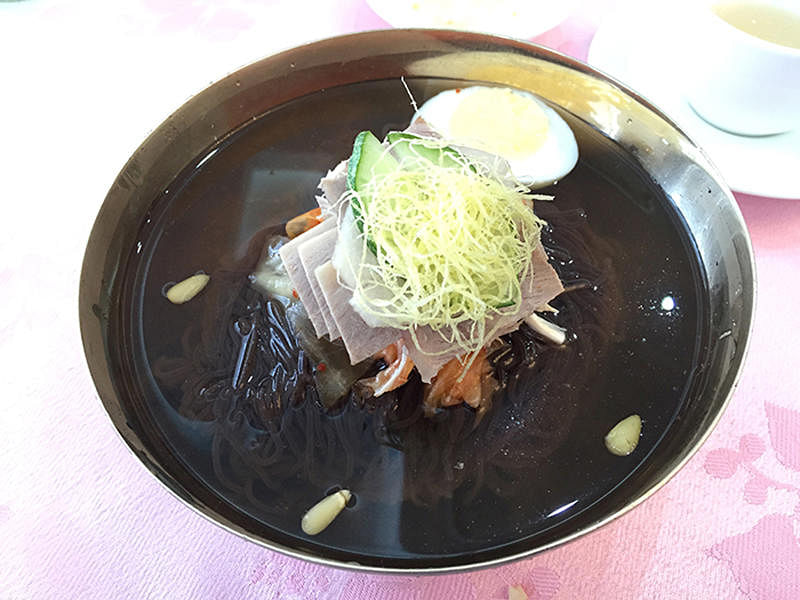
5. A Korean version of the potato fritter dish rosti from Switzerland, where North Korean leader Kim Jong Un spent part of his childhood.
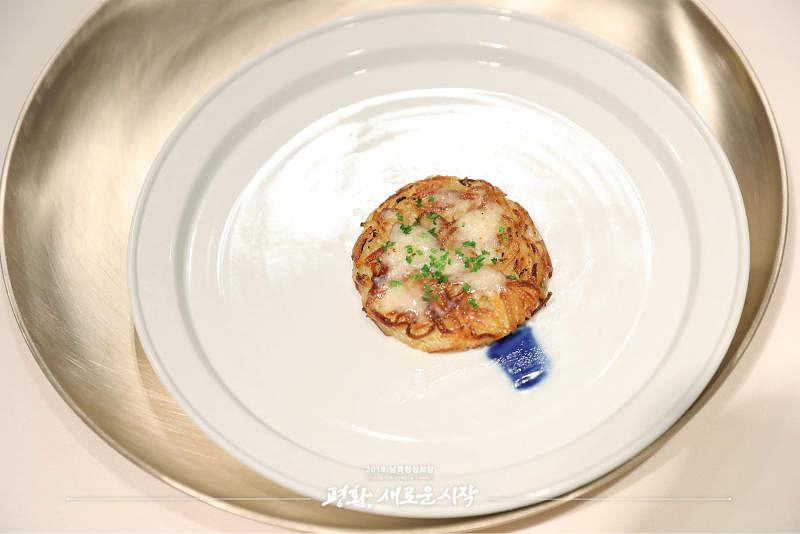
North Korea has never confirmed Mr Kim was educated in Switzerland, but former classmates and teachers have said they spent time with him there. Swiss newspapers have also reported Mr Kim went to school there under a pseudonym.
6. Charcoal-grilled beef from the Seosan Beef Farm in Chungcheongnam-do province, from where Chung Joo Young, the former honorary chairman of Hyundai Group, sent a number of cattle to North Korea.

7. Baked John Dory, a dish made from the flat sea fish. The John Dory fish is the most commonly eaten fish in the South Korean port city of Busan, where South Korean President Moon Jae In spent his childhood.

8. For dessert, there will be a mango mousse decorated with the unification flag and spring flowers, encased in a chocolate shell.
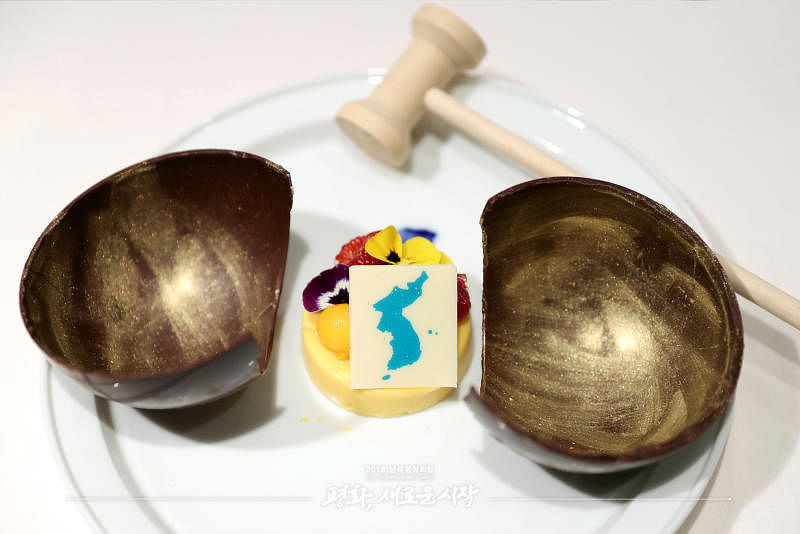
9. The leaders can wash down the meal with a fragrant wine made from azaleas. Also on the table will be munbaeju, a distilled liquor that is 40 per cent alcohol by volume and which originated in the North, but is now traditionally made in the South.
How will the meeting room be furnished?

They will be using custom-made furniture with a political message.
South Korea has custom made furniture for the summit with chairs featuring disputed islands that are controlled by Seoul but claimed by Tokyo.
The two Koreas share a resentment of Japan, which imposed colonial rule on the peninsula from 1910 to 1945.
The new walnut chairs to be used by Mr Kim and Mr Moon both feature a map of Korea.
The tiny disputed islands are clearly marked, according to pictures released by South Korea's presidential Blue House on Wednesday.

The meeting will be held around an oval table that is 2,018mm wide to mark the current year.
"The oval table reflects the wish to see the North and the South sit down together and hold frank talks without any feeling of distance despite 65 years of division," the Blue House said.
What is Kim bringing?
Reports have said that the North Korean leader is likely to bring his own personal, portable toilet to the summit.
Mr Kim usually "has a personal toilet that follows him around when he travels", said Mr Lee Yun Keol, who formerly worked in a North Korean Guard Command unit before going to South Korea in 2005.
Mr Lee told the Washington Post: "The leader's excretions contain information about his health status so they can't be left behind."
In a 2015 report published in the Guardian, sources were quoted saying that Mr Kim travels with a mobile toilet built into one of the vehicles in his convoy, when he conducts routine inspections of military bases and state-run factories around the country.
The source, who was not identified, also added that it would be "unthinkable" for the North Korean leader to use a public restroom.
SOURCES: AFP, Reuters
